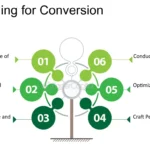Building trust through web design is essential for establishing strong relationships with your users and encouraging them to interact with your website and brand. Trust influences user engagement, loyalty, and conversion rates. By incorporating key elements that enhance credibility and transparency, you can create a web design that fosters trust and confidence in your visitors. In this article, we’ll explore the key elements for building trust through web design.
1. Professional and Consistent Design
A professional and consistent design establishes credibility and signals reliability to your users. Maintain consistency in your branding, color scheme, typography, and visual style across your website. A cohesive design demonstrates attention to detail and instills confidence in your brand.
2. Clear and Intuitive Navigation
Clear navigation helps users find what they’re looking for quickly and easily, improving their overall experience. Use clear labels, a logical structure, and intuitive navigation menus. A smooth and efficient user journey builds trust by showing that you value the user’s time and effort.
3. Trust Signals and Certifications
Trust signals, such as security badges, certifications, and awards, provide reassurance to users about the safety and credibility of your website. Display these trust signals prominently, especially in areas where users are making transactions or sharing personal information.
4. Privacy and Data Security
Be transparent about how you collect, use, and protect user data. Clearly communicate your privacy policy and data practices. Offer secure payment options and use encryption for data transmission. Ensuring data security helps build trust and confidence in your website.
5. Testimonials and Reviews
Displaying testimonials and reviews from satisfied customers can boost credibility and trust. User-generated content, such as ratings and comments, provides social proof and helps potential customers make informed decisions. Highlight positive experiences and feedback to build confidence in your offerings.
6. Transparent and Easy-to-Find Information
Provide users with clear and accessible information about your products, services, and policies. Make contact information, customer support, and return policies easy to find. Transparency in pricing, shipping, and other details helps build trust by setting clear expectations.
7. Fast Loading Times and Performance
A fast-loading website creates a positive user experience and builds trust in your brand. Optimize your website’s performance by minimizing HTTP requests, compressing images, and leveraging browser caching. A quick and efficient site demonstrates professionalism and respect for the user’s time.
8. Accessibility and Inclusivity
Designing with accessibility in mind ensures that all users, including those with disabilities, can interact with your website. Adhering to web accessibility standards builds trust and loyalty by demonstrating your commitment to inclusivity and equal access for all users.
9. User-Centered Design
A user-centered design approach focuses on the needs and preferences of your audience. Conduct user research and gather feedback to understand your users’ goals and challenges. A design that prioritizes user experience builds trust and fosters long-term relationships.
10. Responsive Design
A responsive design ensures your website functions seamlessly across various devices and screen sizes. A consistent experience on desktop, mobile, and tablet devices builds trust and encourages users to engage with your site regardless of the device they use.
Conclusion
Building trust through web design requires a thoughtful approach that prioritizes user experience, transparency, and credibility. By focusing on professional and consistent design, clear navigation, trust signals, and privacy and data security, you can create a website that instills confidence in your users. Additionally, providing testimonials and reviews, offering transparent information, and ensuring fast loading times and accessibility further contribute to building trust. By implementing these key elements, you can establish a positive and trustworthy relationship with your users that leads to increased engagement and conversions.


